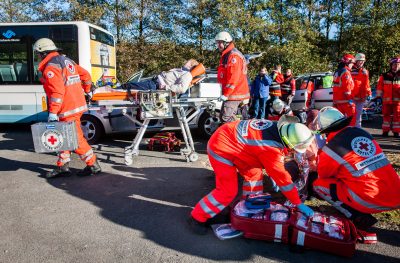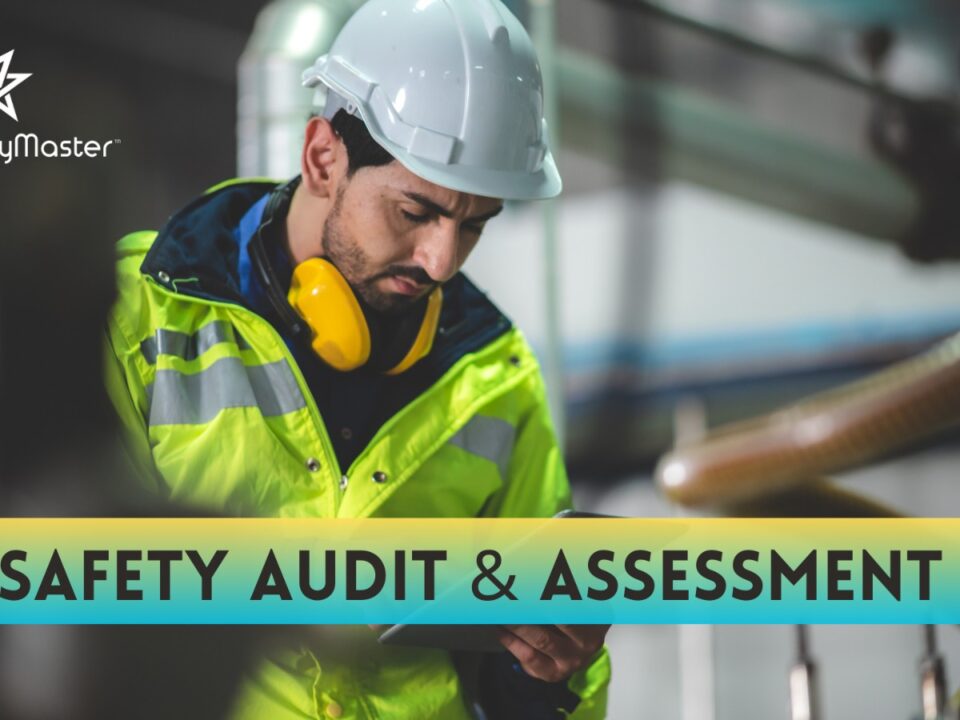Training & Certification Challenges in Construction Safety Manpower

Innovative Tech for Construction Site Safety Audits & Tips
June 17, 2024
Role of Leadership in Promoting a Culture of Safety: A Behavior-Based Safety Audit Approach
June 20, 2024The construction industry is a dynamic and often hazardous field that relies heavily on a skilled and safety-conscious workforce. Ensuring the safety of workers is paramount, and this responsibility falls significantly on the shoulders of the safety manpower, including Safety Managers and Supervisors (SMS). Proper training and certification of SMS is crucial in maintaining high safety standards on construction sites. However, the industry faces significant challenges in recruiting and retaining qualified safety manpower. This blog explores the importance of proper training and certification of SMS, the challenges faced in the recruitment and retention of safety manpower, and potential solutions to these issues.
Importance of Proper Training and Certification
Ensuring Compliance with Regulations
Construction sites are subject to stringent safety regulations and standards. Safety Managers and Supervisors must be thoroughly trained and certified to ensure compliance with these regulations. Proper training equips them with the knowledge and skills necessary to identify hazards, implement safety protocols, and respond effectively to emergencies. Certification, on the other hand, serves as a formal acknowledgment of their competence and adherence to industry standards.
Enhancing Workplace Safety
Well-trained and certified safety personnel are instrumental in creating a safe working environment. They conduct regular safety audits, provide safety training to workers, and enforce safety measures. Their presence on construction sites significantly reduces the risk of accidents and injuries, thereby protecting the workforce and minimizing downtime.
Boosting Employee Morale
When workers are confident in the safety measures and protocols implemented on-site, their morale and productivity improve. Properly trained and certified SMS foster a culture of safety, where workers feel valued and protected. This positive work environment encourages adherence to safety practices and reduces the likelihood of unsafe behaviors.
Legal and Financial Implications
Failure to comply with safety regulations can result in severe legal and financial consequences for construction companies. Proper training and certification of safety personnel help mitigate these risks by ensuring that all safety protocols are followed. This proactive approach can prevent costly legal battles, fines, and compensation claims.
Challenges in Recruiting Safety Manpower
Shortage of Qualified Candidates
One of the most significant challenges in the construction industry is the shortage of qualified safety personnel. The demand for skilled SMS often outstrips the supply, making it difficult for companies to find suitable candidates. This shortage is exacerbated by the increasing complexity of construction projects, which require advanced safety knowledge and expertise.
High Turnover Rates
The construction industry is notorious for its high turnover rates, and safety personnel are no exception. The demanding nature of the job, coupled with the high levels of stress associated with ensuring site safety, contributes to the frequent turnover of safety staff. This constant turnover disrupts continuity and can compromise the effectiveness of safety programs.
Competitive Compensation
To attract and retain qualified safety personnel, construction companies must offer competitive compensation packages. However, budget constraints often limit the ability of smaller companies to provide attractive salaries and benefits. This disparity can lead to talented safety professionals seeking opportunities in larger firms or other industries.
Evolving Industry Standards
Safety regulations and industry standards are continually evolving. Keeping up with these changes requires ongoing training and certification, which can be time-consuming and costly. Companies must invest in continuous education for their safety personnel to ensure they remain up-to-date with the latest best practices and legal requirements.
Challenges in Retaining Safety Manpower
Job Satisfaction
Job satisfaction is a critical factor in retaining safety personnel. Safety Managers and Supervisors often face immense pressure and responsibility, which can lead to job dissatisfaction if not adequately addressed. Providing a supportive work environment, opportunities for career advancement, and recognition for their efforts can enhance job satisfaction and reduce turnover rates.
Professional Development
Continuous professional development is essential for retaining safety personnel. Offering opportunities for further education, certification, and career growth can motivate safety staff to stay with the company. Companies that invest in the professional development of their safety personnel are more likely to retain top talent.
Work-Life Balance
The demanding nature of construction projects can disrupt work-life balance for safety personnel. Long hours, high stress, and frequent travel can lead to burnout and attrition. Implementing policies that promote a healthy work-life balance, such as flexible schedules and mental health support, can help retain safety staff.
Recognition and Incentives
Recognition and incentives play a crucial role in retaining safety personnel. Acknowledging their contributions to site safety and offering performance-based incentives can boost morale and loyalty. Companies that recognize and reward the efforts of their safety staff are more likely to retain them.
Solutions for Recruiting and Retaining Safety Manpower
Strategic Recruitment
Developing a strategic recruitment plan can help address the shortage of qualified safety personnel. Partnering with educational institutions, attending job fairs, and leveraging professional networks can expand the pool of potential candidates. Offering internships and apprenticeships can also attract young talent to the field.
Competitive Compensation Packages
To attract and retain qualified safety personnel, construction companies must offer competitive compensation packages. This includes not only competitive salaries but also comprehensive benefits such as health insurance, retirement plans, and paid time off. Performance-based bonuses and incentives can also make compensation packages more attractive.
Continuous Training and Development
Investing in continuous training and development is essential for retaining safety personnel. Providing access to advanced training programs, certification courses, and professional development opportunities ensures that safety staff remain knowledgeable and skilled. Encouraging a culture of continuous learning can also enhance job satisfaction and retention.
Promoting a Positive Work Environment
Creating a positive work environment is key to retaining safety personnel. This includes fostering a culture of safety, providing adequate resources and support, and promoting work-life balance. Recognizing and rewarding the contributions of safety staff can also enhance morale and loyalty.
Leveraging Technology
Utilizing technology can improve the efficiency and effectiveness of safety personnel. Innovative tools such as drones, wearable technology, and safety management software can streamline safety audits, enhance monitoring, and reduce the burden on safety staff. By leveraging technology, companies can create a safer and more efficient work environment.
Conclusion
Proper training and certification of Safety Managers and Supervisors are crucial for maintaining high safety standards on construction sites. However, the industry faces significant challenges in recruiting and retaining qualified safety manpower. By addressing these challenges through strategic recruitment, competitive compensation, continuous training, and a positive work environment, construction companies can attract and retain the skilled safety personnel needed to ensure the safety and success of their projects.
The safety of workers is paramount, and investing in the training and development of safety personnel is an investment in the overall success of the construction industry. By embracing innovative solutions and fostering a culture of safety, companies can overcome the challenges and build a safer future for all.




